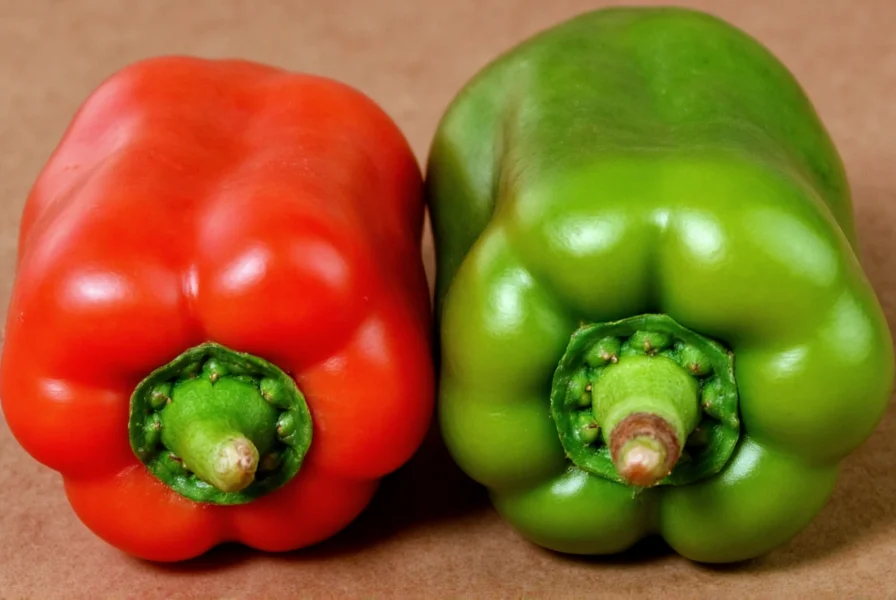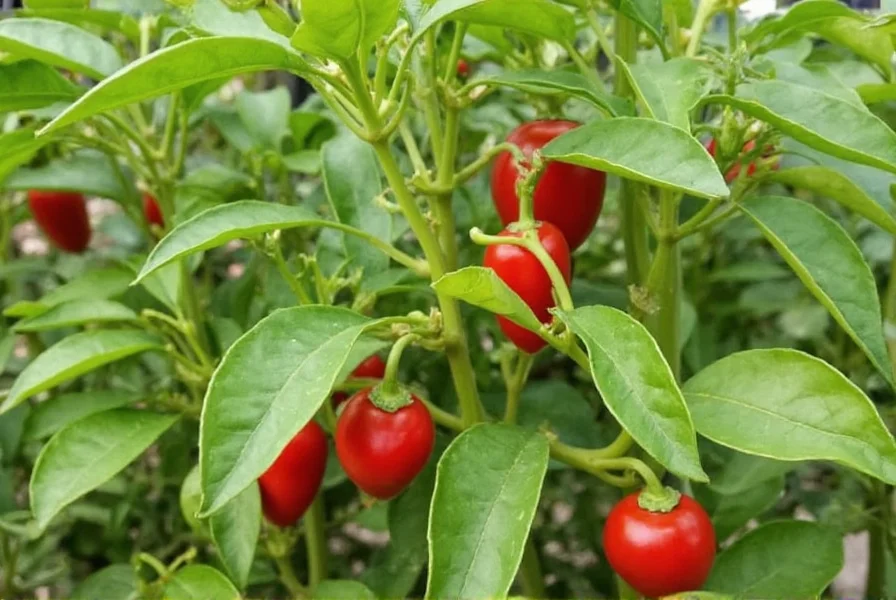When exploring red serrano pepper characteristics, understanding its development from green to red is essential. This Capsicum annuum variety transitions through color stages as it matures, with the red phase representing full ripeness. The transformation isn't merely cosmetic—chemical changes during ripening significantly impact flavor complexity and heat intensity.
Understanding Red Serrano Pepper Development
Red serrano peppers begin as green fruits on the plant. As they mature over 60-90 days, chlorophyll breaks down while carotenoids develop, creating the vibrant red hue. This maturation process affects three critical aspects:
- Heat level—Capsaicin concentration increases by approximately 30% from green to red stage
- Flavor profile—Develops subtle sweetness while retaining bright, grassy notes
- Nutritional content—Higher vitamin C and antioxidant levels compared to immature green peppers
| Pepper Characteristic | Green Serrano | Red Serrano |
|---|---|---|
| Scoville Heat Units | 8,000-16,000 SHU | 10,000-23,000 SHU |
| Flavor Profile | Grassy, vegetal, sharp | Earthy, sweet, complex citrus notes |
| Typical Harvest Time | 70-80 days | 90-100 days |
| Vitamin C Content | 144mg per 100g | 210mg per 100g |
Comparing Heat Levels Across Common Peppers
Many home cooks wonder about the red serrano pepper heat comparison to other popular chilies. While often confused with jalapeños, serranos pack substantially more punch:
- Jalapeño: 2,500-8,000 SHU (red serrano is 2-4x hotter)
- Habanero: 100,000-350,000 SHU (red serrano is 5-15x milder)
- Cayenne: 30,000-50,000 SHU (red serrano is roughly half as hot)
The heat distribution in red serranos differs from many chilies. Unlike habaneros where heat concentrates in the seeds and ribs, serranos maintain consistent capsaicin levels throughout the flesh. This characteristic makes precise heat control challenging when cooking with fully ripe red serrano peppers.

Culinary Applications for Red Serrano Peppers
Chefs value red serranos for their complex flavor profile that combines significant heat with subtle sweetness. The best uses for red serrano peppers include:
- Salsas and hot sauces where vibrant color enhances presentation
- Marinades for meats, particularly chicken and pork
- Infused oils and vinegars
- Roasted and blended into soups and stews
- Fresh in ceviche for tropical heat notes
When substituting in recipes, remember that red serrano pepper vs jalapeño requires adjustment. Use half the quantity of red serrano to replace jalapeños due to the significant heat difference. For those seeking milder alternatives, consider poblano peppers (1,000-2,000 SHU) or Anaheim chilies (500-2,500 SHU).
Growing and Selecting Quality Red Serranos
Gardeners interested in cultivating these peppers should note they require 90-100 days to reach full red maturity. The plants grow 24-36 inches tall with multiple upright peppers. When selecting at markets, look for:
- Firm, glossy skin without wrinkles or soft spots
- Vibrant, uniform red color (avoid orange or patchy specimens)
- Peppers measuring 1.5-2.5 inches long and 0.5-0.8 inches wide
- Intact stems indicating recent harvest

Storage and Preservation Techniques
Proper storage extends the shelf life of fresh red serrano peppers. Keep unwashed peppers in the crisper drawer of your refrigerator for 2-3 weeks. For longer preservation:
- Freezing: Blanch whole peppers for 2 minutes, then freeze in airtight containers (6-8 months)
- Drying: String peppers and hang in dry, ventilated area until brittle (creates excellent seasoning)
- Pickling: Combine with vinegar, garlic, and spices for refrigerator pickles (3-4 months)
Nutritional Benefits of Red Serrano Peppers
Beyond their culinary value, red serranos offer impressive nutritional content per 100g serving:
- Vitamin C: 210mg (233% of daily value)
- Vitamin A: 1,200 IU (24% of daily value)
- Vitamin B6: 0.5mg (29% of daily value)
- Dietary fiber: 3.4g (12% of daily value)
- Metabolism-boosting capsaicin compounds
The capsaicin in fully ripened red serrano peppers shows potential health benefits including pain relief, improved circulation, and modest metabolic enhancement. However, these effects require consistent dietary inclusion rather than occasional consumption.
Frequently Asked Questions
Are red serrano peppers hotter than green serranos?
Yes, red serrano peppers typically measure 10,000-23,000 Scoville Heat Units compared to 8,000-16,000 SHU for green varieties. The extended time on the plant increases capsaicin concentration by approximately 30% while developing additional sweetness.
What's the best substitute for red serrano peppers?
The closest substitutes are red jalapeños (milder) or fresh red cayenne peppers (hotter). For similar heat with different flavor, try Thai bird's eye chilies. For milder alternatives, use red Fresno peppers which share visual similarity but offer less heat.
How do I reduce the heat of red serrano peppers when cooking?
Remove all seeds and white ribs where capsaicin concentrates. Soaking chopped peppers in vinegar or salt water for 15-20 minutes can further reduce heat. Cooking methods like roasting or boiling also diminish capsaicin levels compared to using raw peppers.
Can I grow red serrano peppers indoors?
Yes, serrano peppers grow well in containers with proper care. Use a 5-gallon pot with drainage, provide 6-8 hours of direct sunlight or equivalent grow lights, maintain temperatures between 70-85°F (21-29°C), and water when the top inch of soil feels dry. Indoor plants typically reach 18-24 inches tall.
Why do some red serrano peppers taste sweeter than others?
Sweetness variation comes from growing conditions and harvest timing. Peppers develop more sugars when allowed to fully ripen on the plant in warm, sunny conditions. Those harvested earlier or grown in cooler climates often retain more vegetal, grassy notes with less developed sweetness.











 浙公网安备
33010002000092号
浙公网安备
33010002000092号 浙B2-20120091-4
浙B2-20120091-4